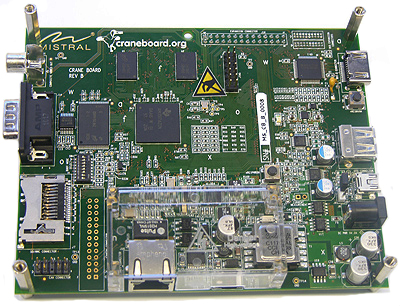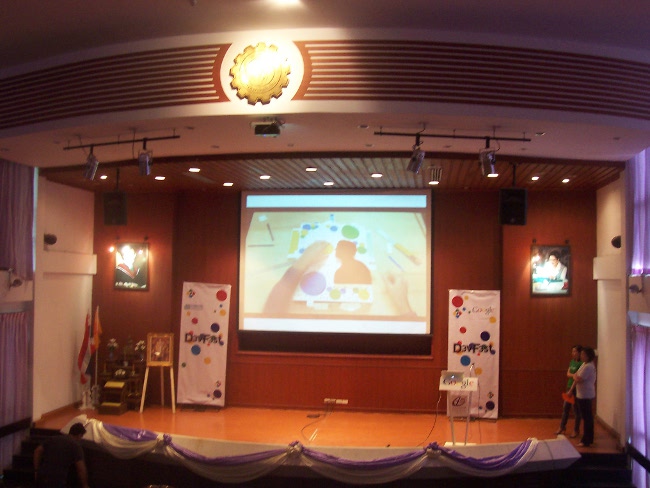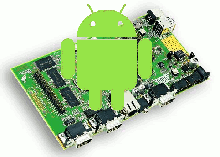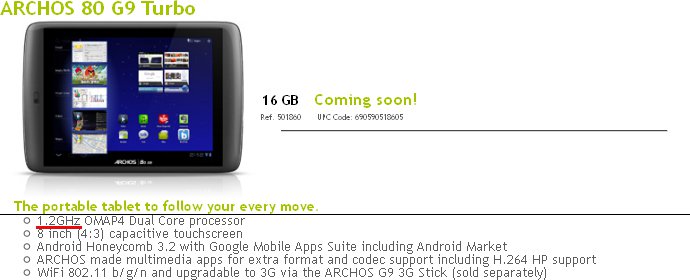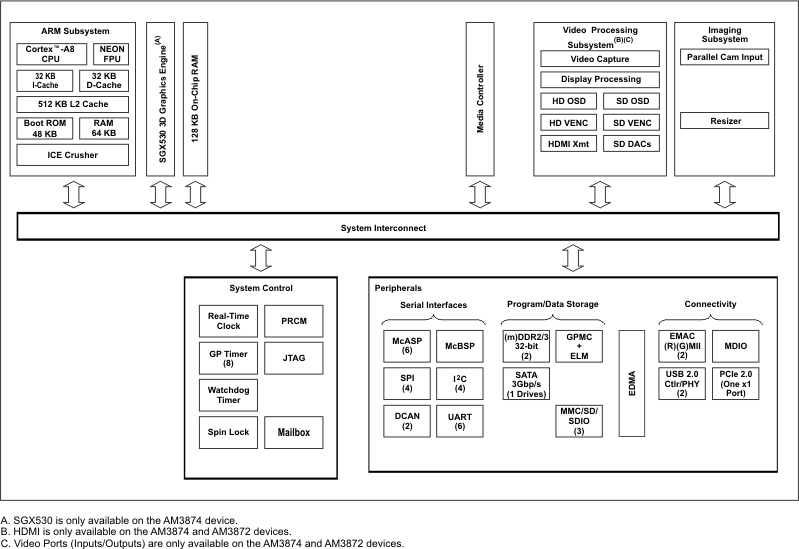CyanogenMod has announced that they would work with FreeXperia and support the following devices in the next release of CyanogenMod: Xperia Arc Xperia Neo Xperia Mini Xperia Mini Pro Xperia Play Xperia Ray Xperia X10 Xperia X8 Xperia X10 Mini Xperia X10 Mini Pro Cyanogen (Steve Kondik) also mentionned that FreeXperia is now part of CyanogenMod development team. Back in January, I’d already posted that it was possible to install a hacked version of Android 2.2 on Xperia X10. You can follow Xperia X10 Development on CM7.1 on XDA form and obtain the source code on github. ROMs based on CyanogenMod 7 for Xperia X8 and Xperia X10 Mini are available at http://code.google.com/p/minicm/ Jean-Luc Aufranc (CNXSoft)Jean-Luc started CNX Software in 2010 as a part-time endeavor, before quitting his job as a software engineering manager, and starting to write daily news, and reviews full time later in 2011. www.cnx-software.com
Qualcomm APQ8060 Android Development Board BSQUARE DragonBoard
BSQUARE announced the DragonBoard a development board built around Qualcomm APQ8060 mainly targeted at Android 2.3 development. Here’s an excerpt of the press release: BSQUARE Corporation, a leading enabler of smart, connected devices, today announced general availability of DragonBoard™, an Android™ development platform based on Qualcomm Incorporated’s Snapdragon™ APQ8060 processor. DragonBoard provides device makers, application developers and other hardware and software ecosystem suppliers with early access to the APQ8060 processor in a flexible development environment. DragonBoard is a powerful, feature-rich development board that offers exposed connectors, adapters and expansion headers including JTAG, Ethernet and mini USB. These features provide deep levels of development, testing and expansion that allow OEMs to do early prototyping of APQ8060 based systems, component suppliers to integrate devices with the APQ8060 processor and Android application developers to create innovative applications for the growing open source development community. When combined with BSQUARE products and services, DragonBoard enables […]
CraneBoard: Low Cost Development Board based on TI AM3517
The CraneBoard is a low-cost, open-source hardware development platform based on the AM3517 Sitara ARM Cortex-A8 microprocessor. The CraneBoard was announced in December 2010, can be purchased for 199 USD and can be an alternative to the Beagleboard-xM. AM3517 is especially suited to industrial applications and would be a preferable platform if your project needs CAN or PoE support. The board has less RAM (256 MB vs. 512MB) and no camera port. Here are the features and specifications of the board (I highlighted the differences with Beagleboard-xM in green): AM3517 Sitara ARM Cortex-A8 – 600MHz Integrated 3D Graphics Accelerator RAM: 256 MB NAND Flash: 256MB Support for on-chip peripherals: 10/100 EMAC USB OTG utilizing on-processor PHY 3.3V I/O CAN Bus DDR2 Power over Ethernet and other power options including USB and DC MMC/SD Card Support Fully open-source four-layer PCB Fully Open Source Linux Board Support package (2.6.32) Based on existing […]
Summary of Google Devfest 2011 Chiang Mai, Thailand
I attended Google Devfest 2011 in Chiang Mai, Thailand last Saturday (24 September 2011) . This was really interesting and enlightening. So if are a developer, I really recommend to register to a Devfest if Google comes to your city. I was relatively surprised by the number of attendees which I estimate between 150 to 200. This Devfest focused on three main subjects: Android HTML5 (and Chrome) Google Analytics Please find the complete schedule below: Track 1 Track 2 09:00 – 09:30 Keynote 09:30 – 10:30 Android Market for Developers (Ankur Kotwal) 10:30 – 11:00 AM Break 11:00 – 12:00 Bleeding Edge HTML5 (Eric Bidelman) 12:00 – 13:00 Implementing Google Analytics (Vinoaj Vijeyakumaar) 13:00 – 14:00 Lunch 14:00 – 15:00 What’s New and Important in Android (Ankur Kotwal) Displaying Large Geographic Datasets: Google Fusion Tables (Luke Mahe) 15:00 – 16:00 These Aren’t the Site You’re Looking For: Modern HTML5 Web Apps (Eric Bidelman) Working Off the Grid: HTML5 Offline (Ernest Delgado) 16:00 – 16:30 PM Break 16:30 – 17:30 Insights […]
How to Develop and Port Android to a New Hardware Platform with Linaro
Zach Pfeffer, Linaro Android Working Group tech lead, gives an introduction to making Android work on a new hardware platform at Linaro Connect Q3.11 in Cambridge, August 2011. He starts by giving details about Android, its implementation, and how source code is managed. He then gives details about how to add support for a new board, taking advantage of Linaro scripts and infrastructure, already supporting community boards from several ARM SoC vendors. Here are the main topics covered during this 48 minutes presentation: General Android Overview (at 5:00 in the video) and different Android “components”: The Linux kernel Non-upstreamed kernel extensions A set of shared and static libraries A set of Hardware Abstraction Layers (HALs) A JIT capable VM Android activity framework Android applications Repo, Gerrit and Git (25:50) Porting to a new Platform (35:07) HALs and Hardware Acceleration (39:00) Continuous Integration (41:02) Linaro Evaluation Build (LEB) Integration (45:06) Slides […]
Learn How to Optimize Android Apps for Tablet
After India and the US last month, Google will organize Android Developer labs sessions in Europe to train developers to optimize their applications for Tablets. Registration is now open for the following European cities: Berlin — September 28 and 29. London — October 3 and 5. Paris — October 27 and 28. Sometimes late October…, but you can register now. This ADL series isn’t another set of introduction-to-Android sessions, nor any other kind of general overview like you may have at Google Devfest. It’s specifically aimed at optimizing Android applications for tablets, in particular creating high-quality tablet applications to provide a polished user interface and an enjoyable user-experience. Registration is open to anyone, but as Google can only accommodate a relatively small number of attendees, they will select attendees who already have an high quality Android app with the potential to be a top-tier tablet app. This series of labs will teach you: The best practices […]
Archos G9 Android 3.2 Tablets Are Now Officially Available
Archos announced that Archos G9 Tablets are now available. There is of course a caveat to this… Only Archos 80 G9 Tablet can be purchased on Archos Store (limited availability) for 299.99 USD, all other models show the dreaded icon “Coming Soon”. However, all Archos G9 models can be pre-ordered on Amazon France but they are not yet available on Amazon US. The other disappointment is that the Turbo versions appear to have been clocked down to 1.2 Ghz, whereas they were previously announced at 1.5 Ghz. Having said that, if you click on “Product Information” on Archos website, it still says “ARM dual-core CORTEX A9 OMAP™ 4 up to 1.5 GHz”. There is also still a lot of confusion about the amount of RAM in the device 512 MB or 1 GB as this is not shown in the specifications. That’s quite a mess, it’s confusing and somewhat frustrating. […]
Texas Instruments AM387X Sitara ARM Cortex A8 Microprocessors
Texas Instruments (TI) has introduced three new AM387x ARM Cortex-A8 microprocessors (MPUs): AM3871, AM3872 and AM3874. TI says these MPUs offer integration of the ARM Cortex-A8 core, peripherals for high-bandwidth connectivity (SATA, D-CAN, PCI Express (PCIe), Gigabit Ethernet switch and more), 3D graphics for enhanced GUIs and display subsystems for camera connectivity and viewing. The AM387x ARM Cortex-A8 MPU can connect to and control IP and CAN networks, HD displays, keyboard, mouse, PC, SD card and various general purpose peripherals, all via one highly integrated processor in an industrial automation application controlling a production line and a high-speed, shared data bus allows for reduced communication overhead and quick access to shared data, which results in reduced chip count, discrete memory costs and printed circuit board (PCB) space compared to separate solutions. Those MPUs are targeted at a variety of fanless applications such as: single board computing, network and communications processing, […]




